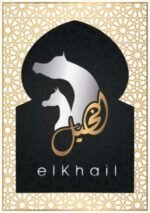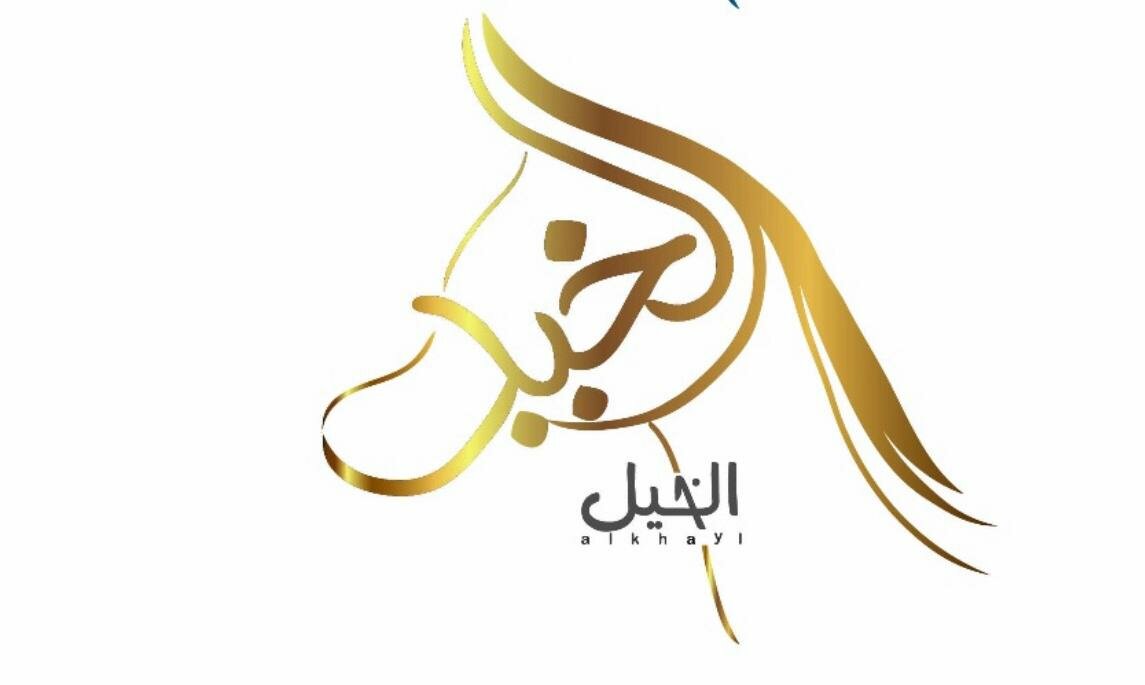الخيول العربية الأصيلة .. ندوة افتراضية تبحث حالتها النفسية على جروب عشاق الخيل
عبدالله العصفور : الخيول تستخدم لغة الجسد بنسبة 85% .. ولغة الأصوات تكشف أماكنها للمفترسات

النقاش حول الخيول العربية الأصيلة دائم لا يتوقف ولا ينتهي ، فالبحث والتجديد عملية مستمرة لا تتوقف لدي ملاك ومحبي الخيول العربية الأصيلة ، ومن هذا المنطق يناقش جروب عشاق الخيل في ندوته الجديدة ” دراسة نفسية الخيل” والتي يتابعها ” موقع الخيل “.
وقد بدأت الندوة بكلمات الترحيب من السيد براهيم العقاب مالك مزرعة العقابية بالمدينة المنورة بالسادة اعضاء الجروب عامة.
وبتقديم خاص لضيف الندوة الاستاذ عبد الله العصفور المتخصص فى علم لغة الخيل وفهم نفسياتها وشخصياتها وطرق تفكير الخيل العربية .
وأكد العقاب في كلمته ان هذا المجال فريد ، موضحا أن ملاك الخيل يحبون الاطلاع بشكل متصل والعلم بالتفاصيل الداخلية لهذا المجال .
 بدأ الاستاذ عبد الله العصفور حديثة بالشكر لاعضاء الجروب موضحا أنه مهتم بالخيل العربية بشكل خاص ، والخيل الاجنبية بشكل عام.
بدأ الاستاذ عبد الله العصفور حديثة بالشكر لاعضاء الجروب موضحا أنه مهتم بالخيل العربية بشكل خاص ، والخيل الاجنبية بشكل عام.
والتركيز علي طريقة فهم هذا العلم لمعرفة طرق تنبية وسلوك الخيول العربية الأصيلة وفهم نظامها في التفكير ، ولغتها في التواصل مع بعضها فى القطيع.
ليستفيد ملاك الخيل من هذة الخصائص فى برامج التربية والتدريب والإنتاج.
وردا على السؤال الذي يطرح نفسه باستمرار حول وجود لغة للخيول قال العصفور ان الخيول العربية الأصيلة تستخدم فى التواصل لغة الجسد والاصوات .
ولكنها تعتمد على الجسد فى الكثير من الاحيان وبنسبة تصل الي 85% عن لغة الصوت لان الاصوات من الممكن ان تكشف للمفترسات أماكنها .
وكشف العصفور أن هناك سؤال اخر يردده البعض حول أهمية فهم لغة الخيول العربية الأصيلة وما هي طرق التواصل معة؟
قائلا :اذا فهمنا طرق تفكير الخيل العربية ولغتها التى تتحاور بها مع بعضها البعض فسيسهل علينا كمدربين او ملاك او سياس أن نتواصل مع الحصان ، وأن نفهم ماذا يريد الحصان عن طريق الإيماءات التى يقوم بها من خلال الجسد لتصل المعلومة اثناء التربية السلوكية فى الاسطبل ، فلكل اشارة فى جسد الحصان من الجحفلين حتى الشليل معني، فـالحصان يتكلم عبر هذة الايماءات ، والحركات تجمع مع بعضها لتدل على الكلمة.
وأضاف العصفور أن الحركات هي اللغة التي يستخدمها الحصان ، لتعبير عن الألم والسعادة والفهم ،والتوتر والحزن والخوف ، مؤكدا أن اكبر دليل على ذلك بيت الشعر لعنترة بن شداد الذي يتحدث فيه عن حصانة لحصانه الأبجر.
يجيبُ إشاراتِ الضَّمير حساسة ويغنيكَ عن سوطٍ لهُ ولجام
وكذلك وصف المتنبى أيضا ..
وَأدّبَهَا طُولُ القِتالِ فَطَرفُهُ يُشيرُ إلَيْهَا مِن بَعيدٍ فَتَفْهَمُ
تُجاوِبُهُ فِعْلاً وَما تَسْمَعُ الوَحَى وَيُسْمِعُها لَحْظاً وما يَتَكَلّمُ
وهذا دليل على أن أول من فهم لغة جسد الخيل وفهم هم العرب.
وأشار العصفور أن الحصان يستمع بإنصات وحب لمن يفهم لغته ويكتسب ثقته ، وبالتالي تنشأ علاقة تجعل الحصان ينفذ كل الاوامر والتعليمات الصادرة إليه بدون اي عناد ،ولا يصدر حركات غير مرغوب فيها او يقوم بالتخريب في الاسطبل أو الهجوم علي الخيل الأخري ، ولابد أن تجعل الحصان يدرك أنك صاحب اعلي منزله ومرتبة لدية، ومصدر ثقته في الحياة ، فهذا تفكير الخيل فى القطيع، وهذا يجعل الحصان مؤدبا ولا يقوم بالتخريب فى الاسطبل او الهجوم على الخيل الاخرى .
كما ان الخيول العربية الأصيلة يتميز باخلاقة وصفاتة المختلفة عن باقى سلالات الخيل الاخري مثل الشجاعة الزائدة والزكاء الحاد والود والحب ، فالخيل لها سلوكيات ومراتب بالقطيع ولا بد ان تعلم ان الحصان كائن اجتماعى بطبعة، فاذا عزلته عن القطيع فلا بد ان صداقتك وحبك هما البديل .
يقول المتنبى :-
وَما الخَيلُ إلاّ كالصّديقِ قَليلَةٌ وَإنْ كَثُرَتْ في عَينِ مَن لا يجرّبُ
إذا لم تُشاهِدْ غَيرَ حُسنِ شِياتِهَا وَأعْضَائِهَا فالحُسْنُ عَنكَ مُغَيَّبُ
واشار العصفور أن الخيول العربية الأصيلة غالبا تدخل مرحلة المراهقة عمر سنتين ، وتريد في مرحلة المراهقة أن تفرض هيمنتها ، وبالتالي يحدث تغير نفسي وسلوكي لديها ، وهذا يتطلب المام مالك الخيول العربية الأصيلة بهذه التغيرات ليكون مستعد للتعامل معها ، فمن الممكن أن يتعرض الحصان لمرض الأكتئاب بسبب سوء الفهم والتعامل، وتتمثل أعراض المرض في شحوب الحصان وقلة الطاقة والحركة ، لذا علينا أن ندرك أسباب المشكلات قبل حلها ، فمثلا العادات السيئة التي يكتسبها الحصان مثل شفط الهواء فهذة العادة لها سببين ، السبب الاول الشعور بالملل وذلك بسبب عدم اللعب وقلة الخروج من البوكس والتريض ، والسبب الثاني الشعور بإكتئاب شديد .
 وتطرق العصفور إلي طرق التدريب باستخدام التعزيز الايجابى والتعزيز السلبى قائلا :أول من روض الخيل هو سيدنا اسماعيل علية السلام ، واول من ابدع فى هذا المجال هم العرب واخذ الغرب هذة الأساليب من العرب بالأندلس لذلك نجد معظم الاساليب الصحيحة فى التدريب بأسبانيا ، لانها من أصول عربية ، فالتعزيز ( الترويض ) يأتى عن طريق أمرين الآلم او التحفيز ، فالبشر يستخدمون الادوات للتواصل مع الحصان منها مثلا السوط او العصا فاذا لم يتحرك الحصان يقوم الانسان بضربه وهذا خطأ لانه يسمع أوامرك خوفا من الضرب او الألم ولكن فى نفس الوقت تفقد التواصل النفسي مع الحصان، والتعزيز عن طريق التحفيز هو انسب تدريب فمثلا اذا قام الجواد بتنفيذ تعليماتك قم باهدائة قطعة سكر وهكذا.
وتطرق العصفور إلي طرق التدريب باستخدام التعزيز الايجابى والتعزيز السلبى قائلا :أول من روض الخيل هو سيدنا اسماعيل علية السلام ، واول من ابدع فى هذا المجال هم العرب واخذ الغرب هذة الأساليب من العرب بالأندلس لذلك نجد معظم الاساليب الصحيحة فى التدريب بأسبانيا ، لانها من أصول عربية ، فالتعزيز ( الترويض ) يأتى عن طريق أمرين الآلم او التحفيز ، فالبشر يستخدمون الادوات للتواصل مع الحصان منها مثلا السوط او العصا فاذا لم يتحرك الحصان يقوم الانسان بضربه وهذا خطأ لانه يسمع أوامرك خوفا من الضرب او الألم ولكن فى نفس الوقت تفقد التواصل النفسي مع الحصان، والتعزيز عن طريق التحفيز هو انسب تدريب فمثلا اذا قام الجواد بتنفيذ تعليماتك قم باهدائة قطعة سكر وهكذا.
واوضح العصفور أن التربية السلوكية تبدأ منذ لحظات الولادة الأولي في الخيول العربية الأصيلة ، فتواجدك بجانب الام بعد الولادة يعطي الفلو انطباع انك ضمن هذا القطيع وبهذا تبدا عملية التغير في السلوك ، يليها عملية التدريب بعد الفطام لان الام تربى رضيعها خلال اول ثلاث شهور لذلك يجب عليك ان تربى الام تربية سليمة منذ البداية.
واشار العصفور إلي أن عملية تحفيز واثارة الخيل فى المسابقات باستخدام الاكياس البلاستيك ، غير مستحبه ، موضحا عدم ضرورة استخدام طرق التحفيز عن طريق الخوف او المجهول ،والاهم أكساب الحصان المهارات المطلوبة للتعامل مع ظهور الاصوات ، وما يتتطلب منه تنفيذه في هذا الوقت ، وما هي الاصوات المطلوب خروجها من الحصان ، وكيف ترتفع تدريجيا
طرق تواصل الحصان معنا:-
- الصوت.
- الإشارة.
- اللمس.
والعرب أفضل من أبدعوا فى فهم الخيول العربية الأصيلة .
وقدم العصفور بعد النصائح والارشادات لملاك الخيول العربية الأصيلة قائلا : الخيل مثل البشر، فالله من جمال خلقة جعل للامم والحيوانات طرق تفكير وشخصية ولغة، وفى مجال تدريب الخيل عليك عدم القيام بتدريب القطيع كله بنفس الطريقة لان هناك خيول هادئة بطبعها تنفذ التعليمات بكل هدوء، وأخري عنيفة وعنيدة ، وبالتالي فهم الملاك للغة الخيل ينعكس على التربية السلوكية الصحيحة ويؤدي إلي التالي :
- تقرب الفجوة بين المربى والحصان.
- المساهمة بالوقاية بالمربط.
- عدم ظهور اى مشاكل سلوكية وعدائية.
- عدم ظهور مشاكل نفسية.
- اتباع التربية السليمة والجيدة ينعكس علي نتاج الاجيال .

وسأل السيد براهيم العقاب عن علاج العض لدى الحصان واسباب عض اللسان واخراجة؟
واجاب العصفور بأن العض بشكل عام أمر خطير يختلف فى الدرجات من حصان لأخر وأوضح أن العرب صنفوا العض الى 3 انواع وهم:-
- عض النيل: وهو للبحث عن الطعام وهذة قلة ادب باخلاق الجواد.
- عض فرض الهيمنة: وهو لمحاولة الهيمنة والسيطرة على مالكة.
- العض العدائي: لكى يدافع عن نفسه ، ويحدث للخيول التى مرت بحالات وتجارب سلبية وعنيفة.
وأضاف العصفورأن السلوكيات السلبية بشكل عام يتم علاجها مثل العض ، لوبدأ في مرحلة متقدمة مثل الامهار عمر سنتين ، مشيرا إلى أن الخيول العربية الأصيلة تتعامل عن طريق الذاكرة، وذاكرة الخيل عقلية وهى عبارة عن صور فالصورة لو مرت علية من قبل يتعارف عليها وخصوصا لو كانت سيئة وسلبية.
وسأل الاستاذ سعيد سامى رئيس تحرير مجلة صباح الخيل الامارتية عن اساليب معاتبة الخيل طبقا لحديث رسولنا الكريم صلي الله علية وسلم بانها تستوعب المعاتبة؟
ورد العصفور .. بأن طرق المعاتبة تبدا منذ البداية، فقبل ان نعاتبة يجب أن يكون هناك لغة بين الحصان وصاحبه ، فالحصان عندما يقوم بخطأ ويتم معاتبته يعلم أنه اخطأ، ضاربا مثال بواقعة حدثت لدية بالإسطبل عام 2003 لحصان منصور من الخط المصرى ، ففى احد الايام كنت ذاهب إلى الإسطبل وقال لى احد السياس بان هذا الحصان قام بأخطاء ومتاعب بالإسطبل فقمت بالتحدث بصوت مرتفع ، وقلت أنه اخطأ ولكن كل هذا دون أن يرانى وبعدما انتهيت من عتابة ولومة ذهبت إليه ووجدته نائم فى البوكس الخاص به ويلوم نفسة، لانى قمت بتعليمة منذ البداية عندما يقوم بعمل جيد احفزة واخبرة بانه جيد واصفق له ولكن عندما يخطي اقوم بلومة وعتابة.
خاص – موقع الخيل


